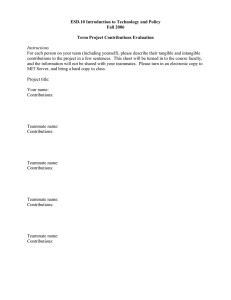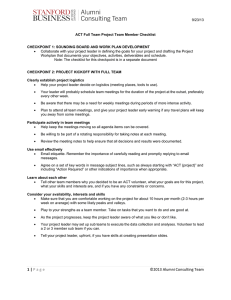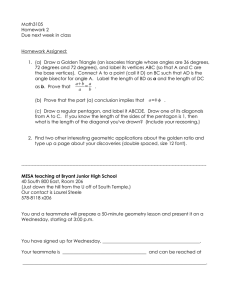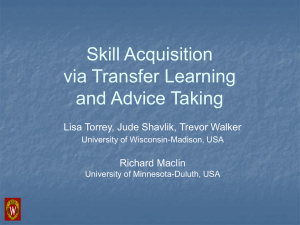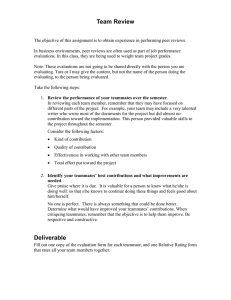8/26/14 • Collaborate with your team members (there are typically... ACT Fast Track Project Team Member Checklist
advertisement
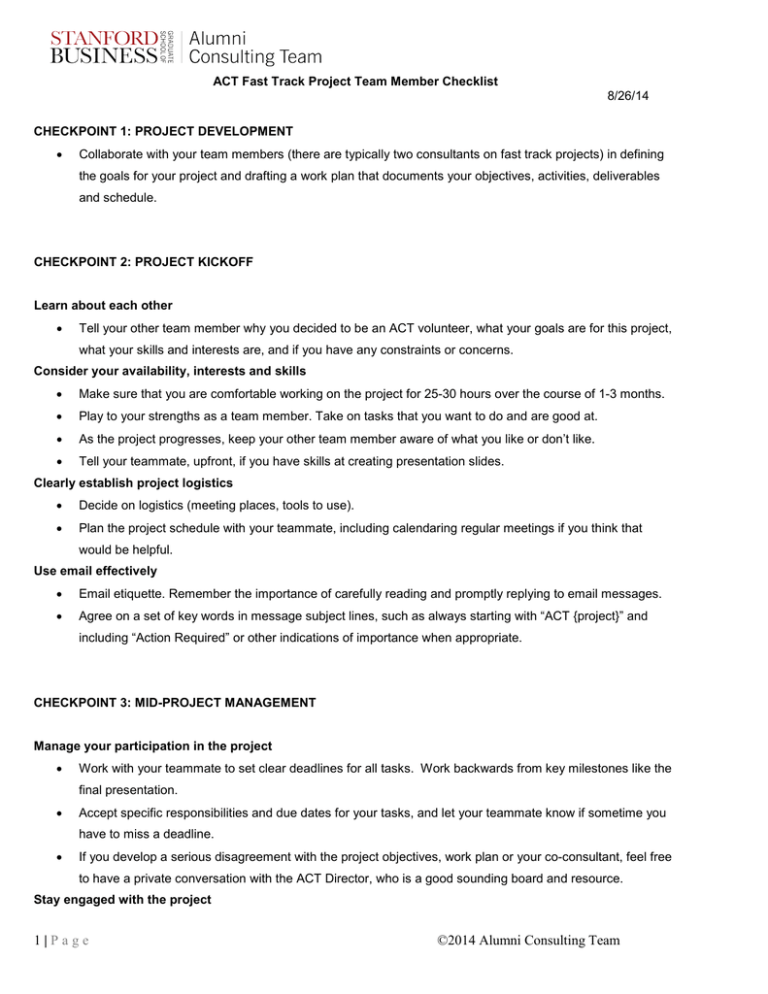
ACT Fast Track Project Team Member Checklist
8/26/14
CHECKPOINT 1: PROJECT DEVELOPMENT
•
Collaborate with your team members (there are typically two consultants on fast track projects) in defining
the goals for your project and drafting a work plan that documents your objectives, activities, deliverables
and schedule.
CHECKPOINT 2: PROJECT KICKOFF
Learn about each other
•
Tell your other team member why you decided to be an ACT volunteer, what your goals are for this project,
what your skills and interests are, and if you have any constraints or concerns.
Consider your availability, interests and skills
•
Make sure that you are comfortable working on the project for 25-30 hours over the course of 1-3 months.
•
Play to your strengths as a team member. Take on tasks that you want to do and are good at.
•
As the project progresses, keep your other team member aware of what you like or don’t like.
•
Tell your teammate, upfront, if you have skills at creating presentation slides.
Clearly establish project logistics
•
Decide on logistics (meeting places, tools to use).
•
Plan the project schedule with your teammate, including calendaring regular meetings if you think that
would be helpful.
Use email effectively
•
Email etiquette. Remember the importance of carefully reading and promptly replying to email messages.
•
Agree on a set of key words in message subject lines, such as always starting with “ACT {project}” and
including “Action Required” or other indications of importance when appropriate.
CHECKPOINT 3: MID-PROJECT MANAGEMENT
Manage your participation in the project
•
Work with your teammate to set clear deadlines for all tasks. Work backwards from key milestones like the
final presentation.
•
Accept specific responsibilities and due dates for your tasks, and let your teammate know if sometime you
have to miss a deadline.
•
If you develop a serious disagreement with the project objectives, work plan or your co-consultant, feel free
to have a private conversation with the ACT Director, who is a good sounding board and resource.
Stay engaged with the project
1|Page
©2014 Alumni Consulting Team
•
Take responsibility to recognize if you feel out-of-the-loop, and talk with your teammate about it.
•
Take advantage of any opportunities to see the client’s operations, such as a field trip to the client’s site.
Help your teammate make work plan changes if needed
•
Expect changes and ongoing adjustments if the client’s situation changes during the project.
•
If your team needs to revise the work plan, get approval from the client. The work plan serves as a tool for
communication so the client knows what they’re going to get in the end.
•
Help control “scope creep.”
Prepare for the mid-project review, if applicable
•
Not all fast track projects include mid-project reviews. Mid-project reviews/presentations can be very
important. Use them to present key observations, tentative conclusions and recommendations to see if you
are on track with your client.
CHECKPOINT 4: THE FINAL PRESENTATION
Start preparations early
•
Work with your teammate to draft the framework for the final presentation as early as possible in the project,
so it gives you a target to work towards.
•
Creating a draft of the final PowerPoint presentation slides provides a structure for thinking about what is
really important to accomplish in the remaining months of the project.
Use an effective presentation style
•
Think about the communication style that you use. Is it appropriate for the client’s level of sophistication?
•
Starting with positive points and then talking about what can be improved makes the client more receptive
to your message.
•
Make sure what you’re saying has a basis, even if that basis is prior experience, and be careful of jumping
to conclusions.
•
Prioritize recommendations; be wary of overwhelming client with too much info in the final presentation.
•
Final presentations are more effective if they present findings and conclusions first and supporting data in
appendices at the end.
Focus on implementation of the recommendations
•
Keep recommendations clear and simple, considering the organization’s capacity to implement them.
•
Provide a framework for implementation and measurement of the results of the team’s recommendations.
•
Identify 3 or 4 specific things the client can accomplish in the next 2 months (short-term)…what they can
start doing right now. Put this “next steps” slide at the very end with a timeframe.
CHECKPOINT 5: POST-PROJECT WRAP UP
2|Page
Complete final project administration tasks
•
It is very important that you respond to the end-of-project survey. ACT needs to know what you think!
•
Send the ACT Director your final deliverables.
•
If you would like to be a candidate for leadership of a full team project, talk to the ACT Director about your
interest.
Celebrate with your project team
•
Pat yourselves on the back! Feel good about the help you provided. ACT will reimburse the cost of $40
each for you and your other team member(s) for a dinner/celebration (see Project Leader Central at
http://alumni.gsb.stanford.edu/act/alumni/toolkit/project-leaders.html for the team dinner reimbursement
form and instructions).
3|Page
©2014 Alumni Consulting Team
